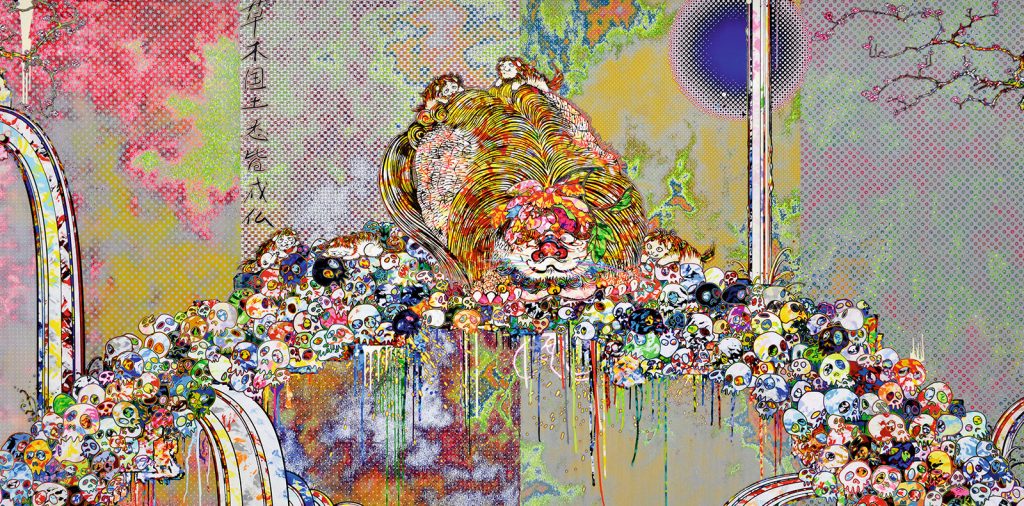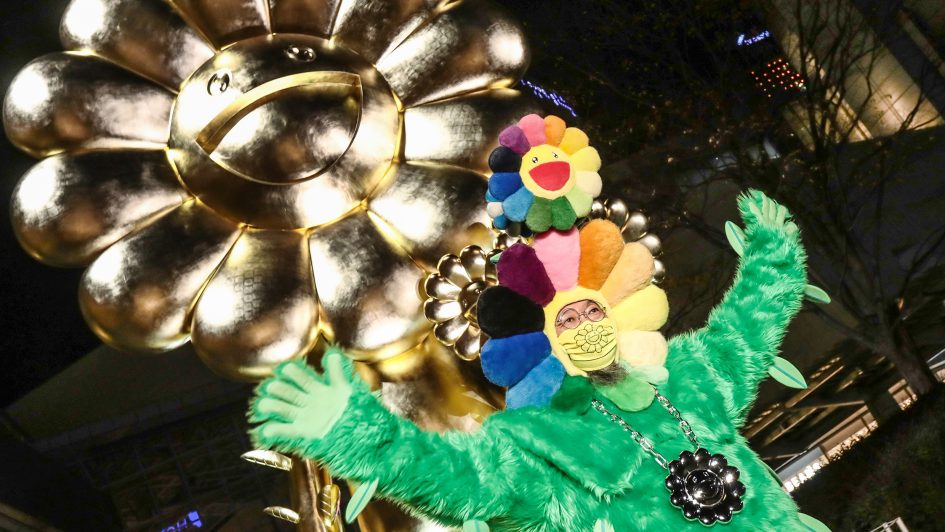Takashi Murakami
Takashi Murakami was born in 1962. Murakami’s father was a taxi driver, and his mother was a homemaker. His mother, who studied needlepoint and designed textiles, had a tremendous influence on Murakami’s interest in the arts.
During Murakami’s childhood, Japan created a national identity that revived traditional Japanese culture and put tremendous pressure on its workforce to produce in order to compete with the West both economically, as well as culturally. The hybrid emphasis on traditional Japanese culture and Western culture influenced Takashi’s art.

Takashi Murakami coined the term Superflat in 2001, he launched one of postmodern art’s movements. Based on the compilation and compression of centuries’ worth of Japanese “flat” art aesthetics, and inspired by anime and manga, he inspired other artists to join him in putting Japan on the art world map. Often categorized as a Japanese form of Pop Art, Superflat has become an international phenomenon, infiltrating all areas of consumer culture from high to low art.
The famous Takashi Murakami flower also belongs to the superflat theory. Flowers appeared in 1995, they flooded fashion and in general every corner of pop culture. He was inspired by a traditional Japanese drawing. One of the items from there is “setsugetsuka”, or snow moonflowers.

I think Takashi Murakami is a vivid example of a phenomenon in the current pop culture when even the most unusual or vice versa simple thing can become incredibly popular and win recognition from a vast number of people in entirely different ways.
References:
https://www.britannica.com/biography/Murakami-Takashi
https://artmap.com/asiapacifictriennial/exhibition/2nd-asia-pacific-triennial-1996-1996

December 12, 2021 at 8:42 pm
Liza,
You are the second student to post on Murakami and possibly not the last. There was a terrific exhibition a few years ago of his work at the VAG which was inspiring. Apparently it was the most well attended exhibition in the history of the VAG. I’m giving you a 2/2 here. Enjoy your holiday break.
Jeff